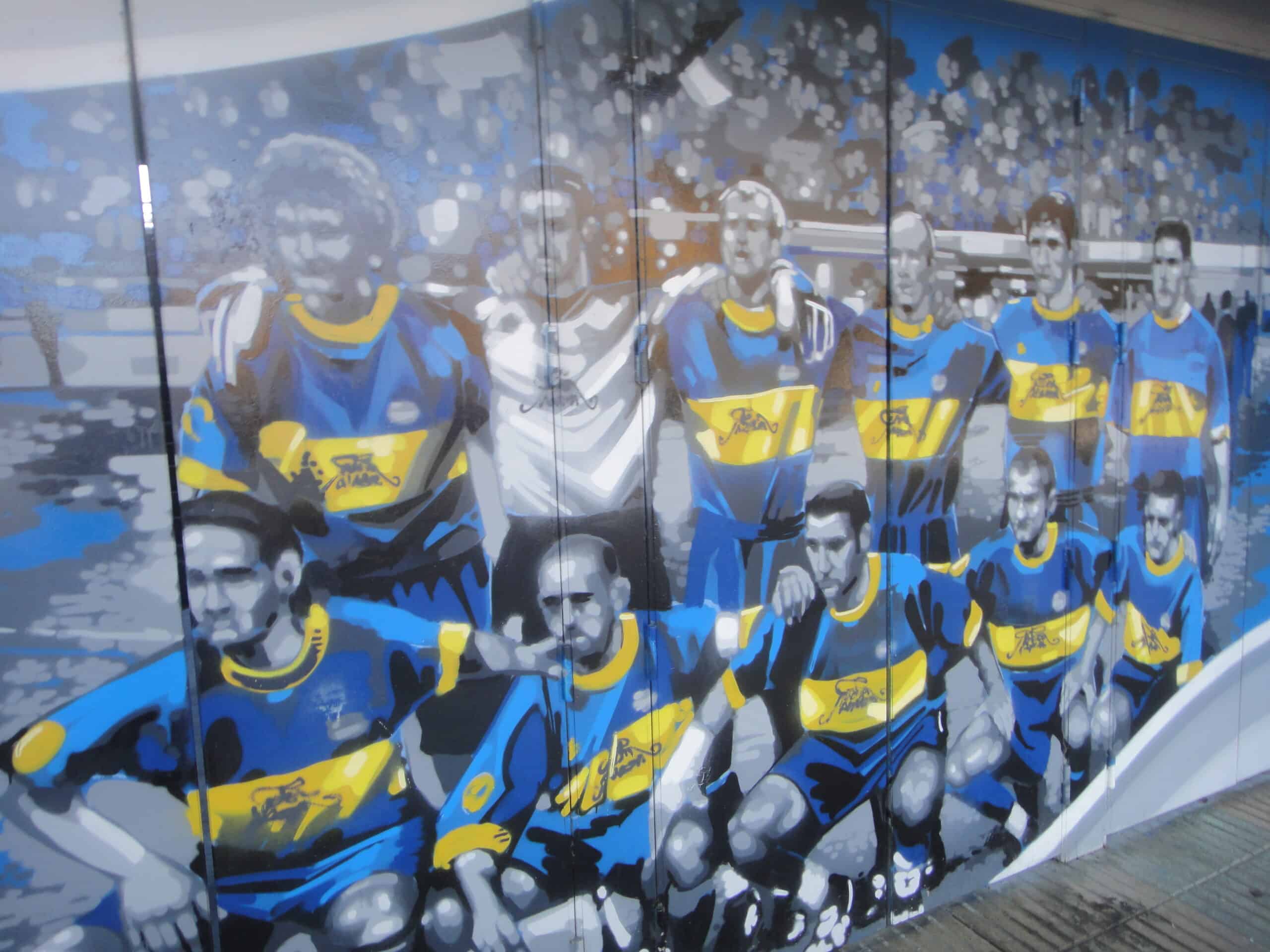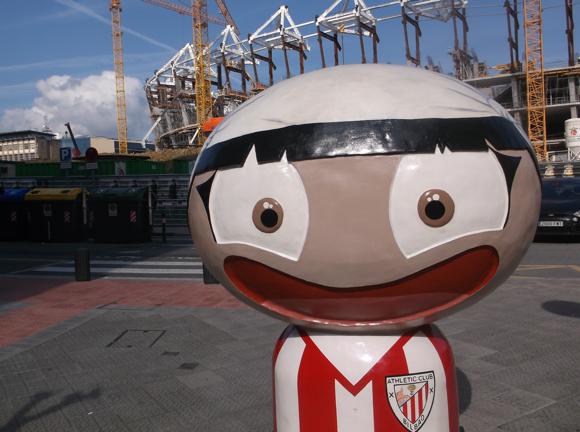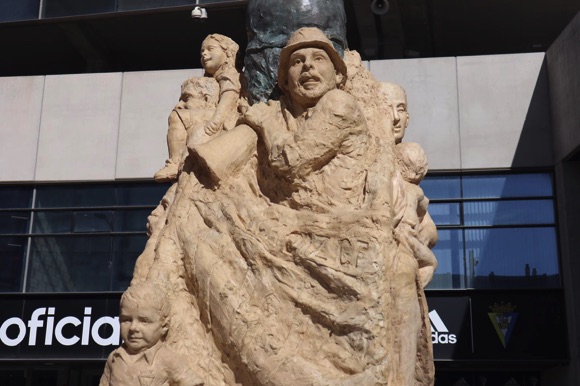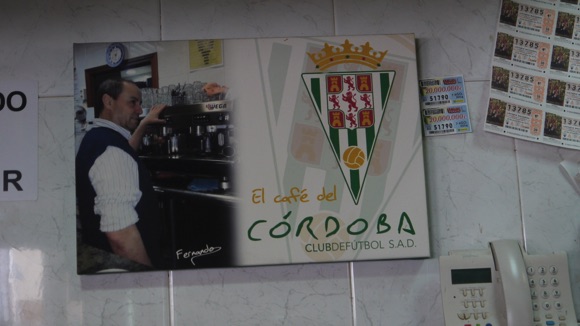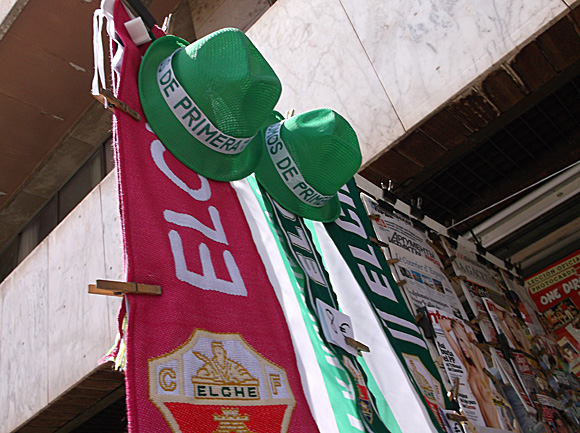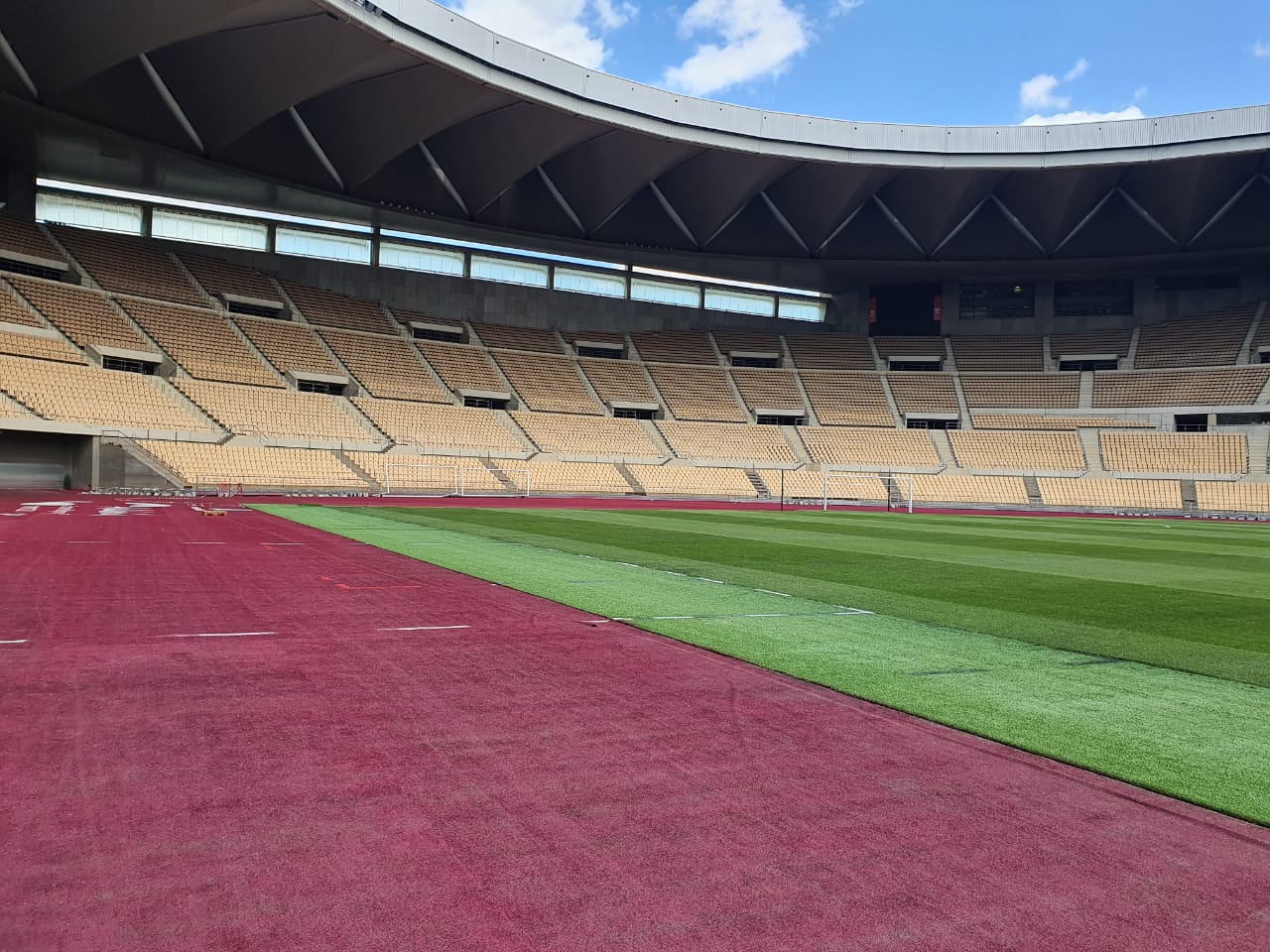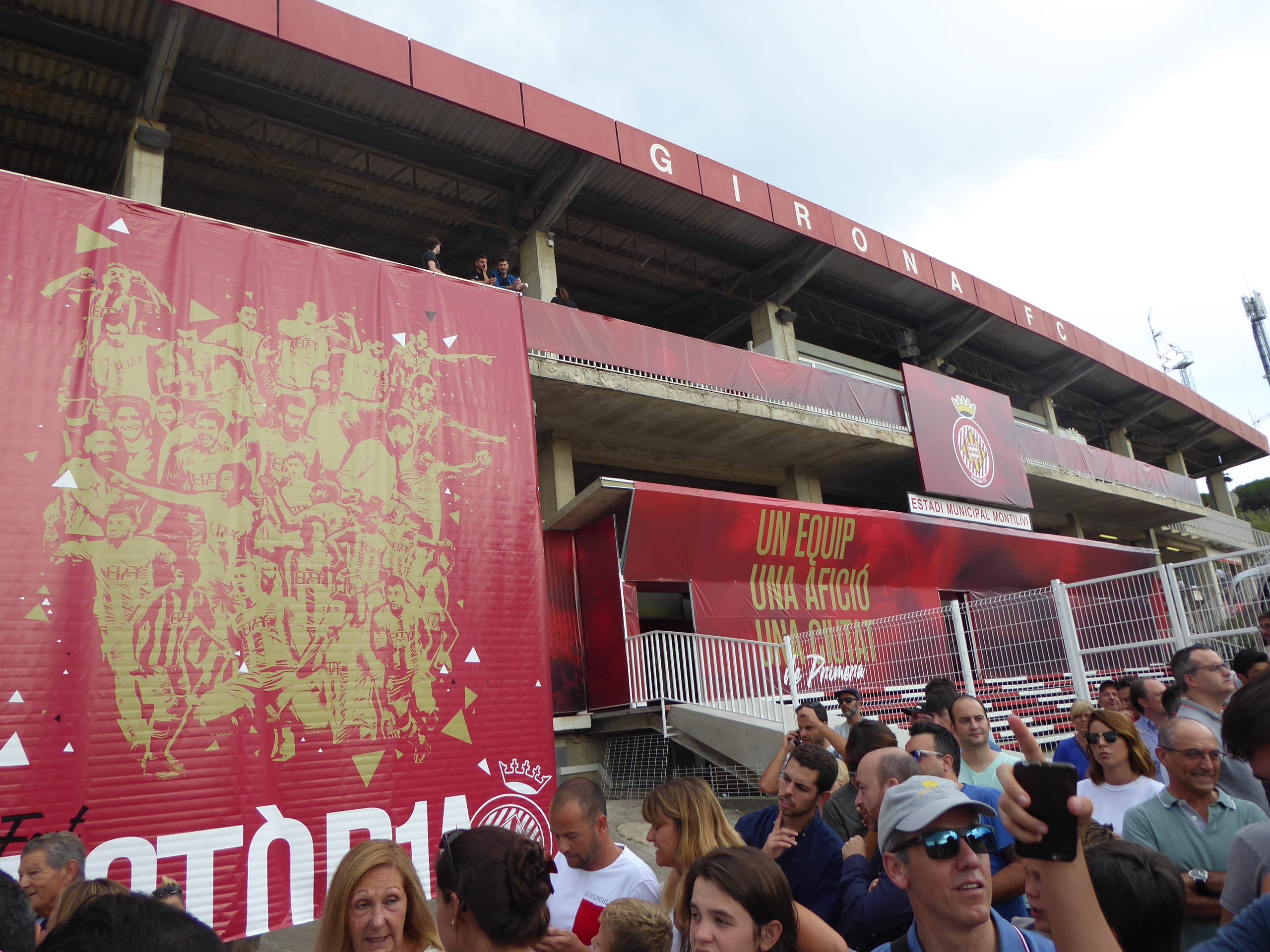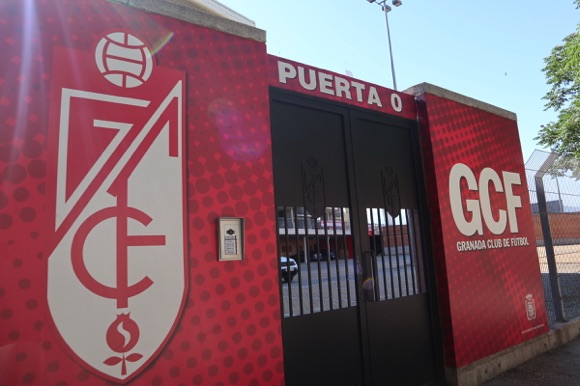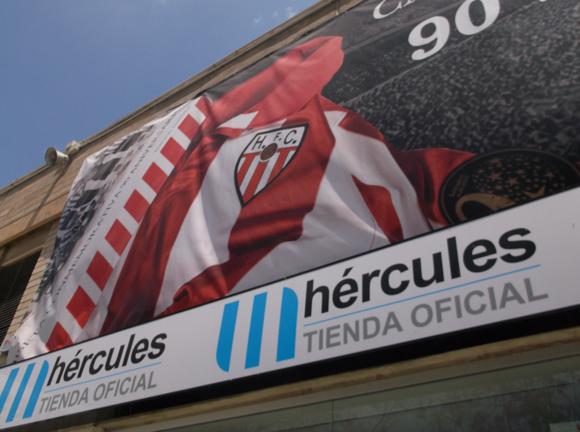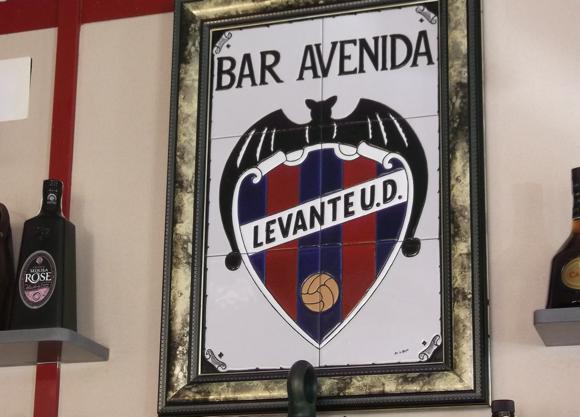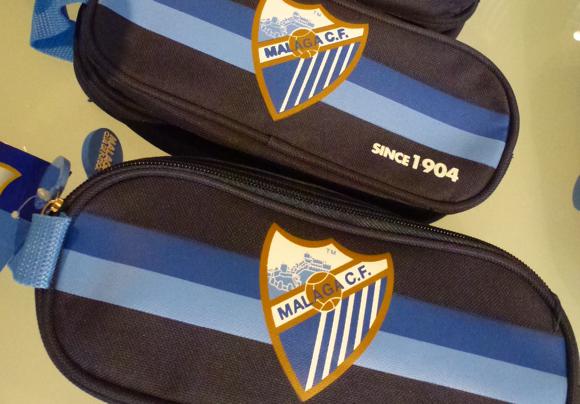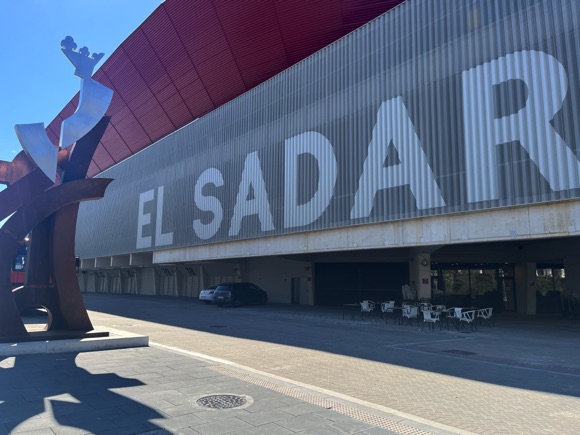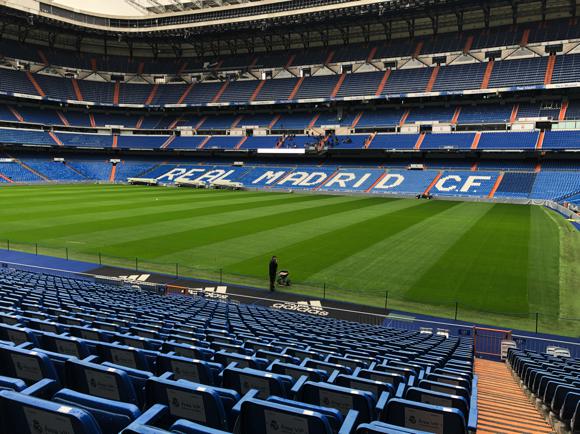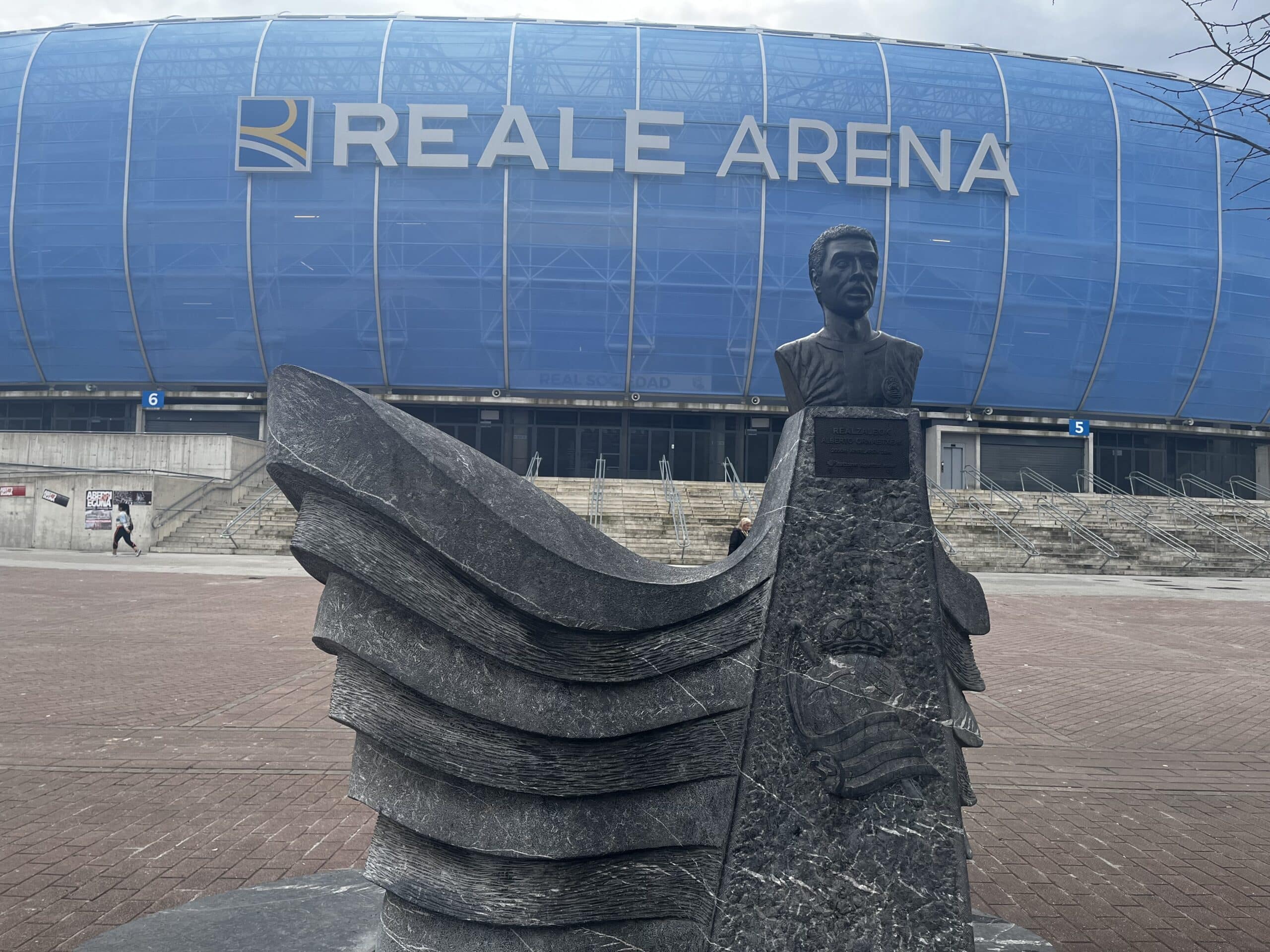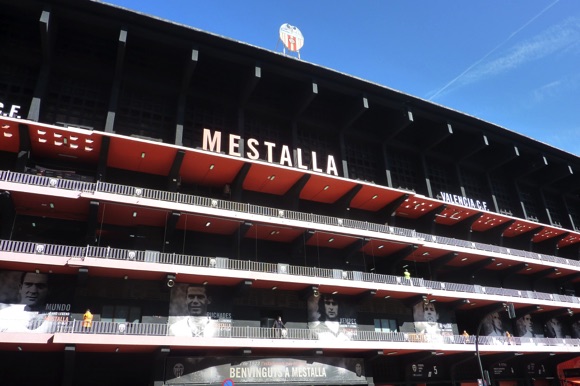A fan’s guide – the club from early doors to today
Around the somewhat functional exterior of the Mendizorrotza, home of Deportivo Alavés, a series of vivid murals brings the club’s history to life. Likenesses of defenders Ciriaco and Quinconces from the 1930-31 season, Deportivo’s first in the Primera, stand alongside a portrait of revered club director, José Luis Compañón, after whom the Alavés training ground further south-west from Vitoria-Gasteiz is named. His famous quote is cited verbatim, “El esfuerzo es la clave del éxito”. Effort is the key to success.
This may have been in Alavés players’ minds that night in 2001 when they took a very good Liverpool side right to the very wire, in an epic two-hour battle considered by many to be the best European final in history. For the Reds, the UEFA Cup would be their third trophy that season, one to stand alongside the European Cups in the Anfield museum.
For Alavés, however, playing in the Boca colours of blue with a yellow band also depicted on the walls of the Mendizorrotza, this was not only a first final but a debut European campaign. El Glorioso, a nickname derived from the golden era of the 1930s, had only been a Primera side for two years, promotion in 1998 a first taste of top-flight football since 1956. They had started the 1990s in the fourth tier.

With Compañón seriously ill after decades of service to Deportivo, the Basque underdogs facing Liverpool brought the score to 3-3, then 4-4, when all had seemed doomed. There was no coming back, though, from the golden own goal four minutes before the lottery of penalties. Nine-man Alavés had been undone by the ball skimming off Delfí Geli’s fringe. Effort had not brought success – but immortality had been assured.
At least in football history. Compañón was buried the following January, his figure in an Alavés tracksuit no longer seen cycling around the wide streets of Vitoria-Gasteiz.
Cycling, in fact, had been the main sport in the capital of the Basque Country. This could be why it lacked the footballing pedigree of Bilbao or San Sebastián, although thanks to Amadeo García de Salazar, a football-loving local doctor and first club secretary, by the later 1920s the newly founded Deportivo Alavés had become major regional challengers in a very strong field. Their own field was the former Campo de Cervantes, where previous local teams, mainly student ones, had played games.
In 1924, this became the Mendizorrotza and by 1929, its tenants were the Basque Country’s only representatives in the inaugural Segunda. Within two seasons, when the possibility of promotion to the Primera was established, Alavés were the first to take advantage. Later celebrated on the stadium walls, this side, El Glorioso, spent three seasons in the top flight, the longest spell until the late 1990s.

In fact, apart from two seasons in the 1950s, Alavés ingloriously swung between second, third and fourth tiers. Change came in 1994, when Txutxi Aranguren returned to Alavés as coach. A stalwart defender for Athletic Bilbao his entire playing career, retiring early to oversee their youth and reserve sides, this former Spain U-18 international had first come to Alavés in 1978. Now he inherited a side that had missed out in the promotion play-offs for the Segunda the year before, an unenviable feat they repeated, before Aranguren took them up in 1995.
Out of his depth at this level but kept on the coaching staff, he was superseded in 1997 by José Manuel Esnal, aka Mané. With little playing career to speak of, this Basque-born figure had gone into coaching in his late twenties, Alavés one of several shorts stints around Spain in the mid-1980s. His return coincided with the arrival of the experienced Paco Leal, who would pick up a second Zamora trophy for goalkeeping excellence, and young centre-back Óscar Téllez, with finely honed positional skills. Combative defensive midfield duties were overseen by Argentine Hermes Desio.
Together, they allowed Alavés to keep their goals-against tally to a mere 25 in 42 games. The reward was promotion to the Primera. Goals from strikers Pedro Riesco and later Spain international Javi Moreno also earned Alavés famous wins in the Copa del Rey over a Real Madrid and La Coruña, a best-ever run ended at the semi-final stage.

Struggling at first in La Liga but buoyed by the signing of stellar international forward Julio Salinas, happy to see out his career in his native Basque Country, Alavés kept faith with Mané for the following season. It proved a historic decision. With, remarkably, Atlético Madrid and the two Seville giants relegated that 1990-2000 season, the Vitoria side took advantage of a topsy-turvy league won by Deportivo La Coruña to sneak a berth for the UEFA Cup.
Again, Alavés had the lowest goals-against total in the whole league – goalkeeper Martín Herrera and right back Cosmin Contra had been wise buys from Argentina and Romania, Téllez had returned from Valencia to partner with team captain, ex-fisherman Antonio Karmona – and finished only one point behind Real Madrid.
Before embarking on his side’s debut European campaign, Mané persuaded Jordi Cruyff to move back to Spain, unhappy at being undervalued at Manchester United. His intelligent forward runs allowed Javi Moreno to shine once more, as Desio still anchored the midfield.
Little-known Alavés proved the surprise package in the UEFA Cup, a late goal from Cruyff at the San Siro shocking Internazionale in the Fourth Round. Two Contra penalties then put the Basques ahead against Kaiserslautern in the semi-final, a 9-2 aggregate whitewash. Next came Liverpool.

His team trailing 2-0 on the quarter-hour, Mané was brave enough to put Uruguayan striker Iván Alonso on for Norwegian defender Dan Eggen after only 22 minutes. Within six, he had headed in and nearly set up an equaliser for Moreno. The striker made up for it immediately after half-time, with two goals in three minutes, one a long-range free-kick. This made it 3-3. More drama followed when a Jordi Cruyff header made it 4-4 on 88 minutes.
This being the early 2000s, with extra-time came the Damoclean agony of the first goal settling things. Every camera shot of the Alavés bench shows Mané desperately looking at his watch. Atrocious indiscipline from Brazilian Magno meant that Alavés were soon down to ten men. It was then nine when otherwise dependable captain Karmona, covering for the missing Eggen for most of the game and more some, delivered a wild challenge on Liverpool’s lively Vladimír Šmicer. A wicked free-kick from man-of-the-match Gary McAllister, himself on a yellow nearly all game, did what wicked free-kicks do, and the ball deflected into the Alavés net. 5-4.
The bulk of the heroic Alavés side stayed on to gain another European place through the back door in 2002 but their early exit was compounded by relegation. By then, Mané had bowed out, making way for the ever-loyal Aranguren, but Alavés set in for seasons of quiet desperation. Worse, a misguided takeover by Ukrainian-American businessman Dmitry ‘Doberman’ Piterman, who had mismanaged Racing Santander, left the club in deep debt.

Recovery has been slow but steady, steered by savvy owner, former basketball champion José Antonio Querejeta, who had run Vitoria’s Saskai Baskonia for 25 years before taking over Alavés in 2013.
Climbing from the third to the second tier that year, Alavés only needed three seasons to regain Primera status. Ever-presents such as goalkeeper Fernando Pacheco and locally born midfielder Manu García were key to providing stability. Up front, Ibai Gómez and Édgar Méndez hit vital goals as Alavés reached the final of the Copa del Rey in 2017. Basque tenacity was not enough for the genius of Lionel Messi, however, and Barcelona romped home 3-1.
While never setting La Liga light, Alavés could at least point to a club equal record of six straight campaigns in 2021-22, Querejeta making plans to expand the Mendizorrotza. Inevitably, first came relegation.

In a very tight race for immediate promotion in 2022-23, Alavés then experienced the kind of drama not seen since 2001. The play-off final goalless in extra-time in the second leg, Levante looked dead certs to go up when a shot rattled the Alavés crossbar on 120 minutes. The closer to the final whistle the game came, the nearer the hosts were to the Primera in any case – with no penalty shoot-outs, Levante’s higher position in the regular season would assure them promotion.
In the 125th minute (!), the ball brushed the arm of a Levante player in the fatal rectangle – penalty! Mayhem! With the clock on 128:48, the heavily bearded Asier Villalibre stepped up to the spot. Basque through and through, the Guernica-born striker had arrived on loan from Athletic Bilbao, and his late goal against Eibar had put Alavés into the play-off final.
Slotting his spot-kick into the corner, the Basque XI international settled the tie after nearly 220 minutes of football over two legs. It was beyond cruel, penalty drama without the shoot-out, distraught players littering the pitch as their Alavés counterparts and equally jubilant visiting supporters went loopy.
A more sober Alavés marked their return to the Primera in 2023-24 with a winless run as summer turned to autumn, former Rangers midfielder, Ianis Hagi, son of Gheorghe, yet to make his mark.








Stadium Guide
The field of dreams – and the story behind it





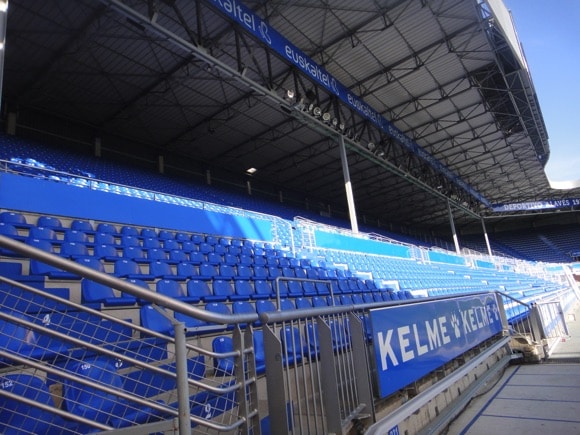


Celebrating its centenary in 2024, the Mendizorrotza holds just under 20,000. Set in a sports complex south-west of town, it has barely changed since the main Principal Stand was created in 2000.
Four neat covered rows of two tiers surround the pitch, the loudest home fans in the Polideportivo end nearest the pelota hall, and in Preferente opposite the main stand. Away fans enter through atea/puerta 3 and are allocated the corner of the Cervantes end nearest Preferente.
Note that Mendizorrotza is the Basque spelling – the stadium is also known by its Spanish rendition of Mendizorroza, the name of the quiet, residential district that surrounds it.
getting here
Going to the stadium – tips and timings


Mendizorrotza has its own stop on the circular pink bus route 2 (every 10mins Mon-Fri, every 15-20mins Sat-Sun), but this skirts the city centre. Orange 8 (every 15-20mins daily) goes round on an inner loop, straight down Avenida Gasteiz, and is quicker from town. The nearest stop is Portal de Lasarte, by a quiet junction barely five minutes’ walk from the stadium. Both lines call at the city’s main bus station.
To walk, it’s about 15 minutes from the Silken Ciudad de Vitoria hotel, where away teams stay. Head straight down Gaztelako Atea, then through or past El Prado Park on either side.
getting in
Buying tickets – when, where, how and how much


Advance tickets are sold from either club shop, in town by the Legebiltzarra parlamento tram stop (General Alava Kalea 1, Mon-Sat 10am-2pm, 4pm-8.30pm) and at the stadium (Cervantes Ibilbidea, Mon-Sat 10am-2pm, 4pm-8.30pm), where ticket kiosks marked Leihatilak operate on match days.
You can also buy online through an English-language portal. Purchasers must provide the names of each ticket holder and there are discounted prices for under-14s.
If there are any available at either end, Polideportivo and Cervantes, they’ll be around €20-€25 whether upper or lower tiers, alta/baja. In the sideline Preferente, it’s €30 nearer the corner flags in the Lateral whether upper or lower, with €40 charged in the central sectors. Prices in the main Principal stand vary from €40 to €60, Lateral to Central. Prices rise for the visits of Barcelona, Real Madrid and Basque rivals.
what to buy
Shirts, kits, merchandise and gifts
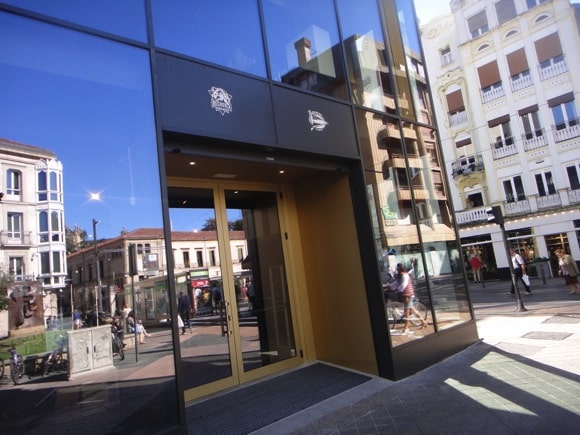



Alavés share the smart Denda Ofiziala (Mon-Sat 10am-2pm, 4pm-8.30pm) in town at General Alava Kalea 1 with the popular basketball team, Saskai Baskonia. You’ll find this prominent boutique by the Legebiltzarra parlamento tram stop – there’s a smaller outlet at the stadium (Cervantes Ibilbidea, Mon-Sat 10am-2pm, 4pm-8.30pm, 2hrs before kick-off, 30mins after final whistle).
In terms of merch, there’s no messing with the blue-and-white stripes, although for 2023-24, these are white stripes on blue. Second kit is a snazzy green with two thin red and white stripes over one shoulder, the kind of thing a cyclist might wear on the Vuelta a España.
For the club’s centenary year of 2021, they published club history, a gorgeous coffeetable publication with separate editions in Spanish and Basque.
Where to Drink
Pre-match beers for fans and casual visitors





Considering the club has been based at the Mendizorrotza for the best part of a century, there are few bars in the immediate vicinity. Mendizorrotza, the district, is leafy, residential and close to the university.
Search around, however, and you find the Bar Mendizorroza at Ariznabarra Kalea 5, a real Alavés haunt with a slightly Munch-like mural on the façade to prove it. In the same vicinity at Astulezko Gazteluaren Kalea 6, the Taberna Akerra shows equal support for Alavés. Both bars are pretty basic inside, with tables outdoors, about ten minutes from the stadium.
Opposite the Portal de Lasarte bus stop on the No.8 route as you arrive from town, the standard, modern Batán (Portal de Lasarte 17) is closer if quite bland. A big tap of Amstel stands on the counter, surrounded by two TVs and an Alavés flag amid the shiny wood of the bar area.
Across the road from the stadium on Cervantes Ibilbidea, stylish Estadio serves the surrounding sports centre, with tennis players and kids from the swimming pool coming and going. The lovely terrace looks over to the Mendizorrotza – on busier match days, those looking to dine should be sports club members, though they’ll serve you a quick beer on an outside table in the sunshine.

